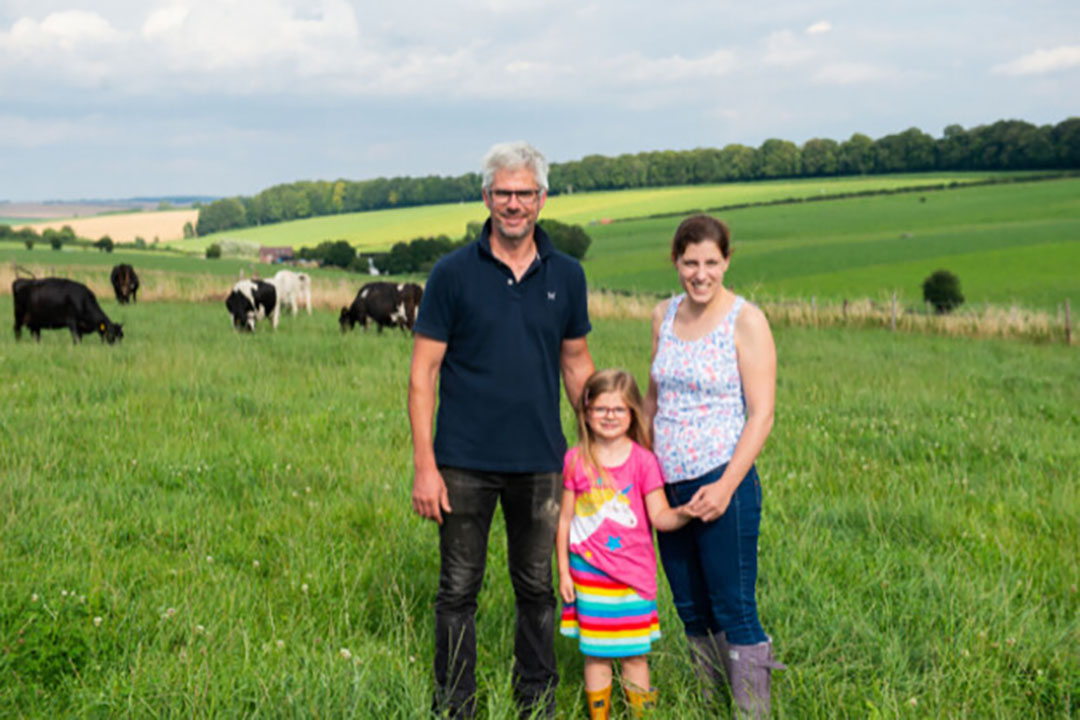
Mark Hoskins, who milks 410 Jersey Friesian crosses twice daily on 364 hectares at Down Dairy, Hindon, Wiltshire, has impressed judges so much that he is one of the finalists in the prestigious RABDF Gold Cup.
Milk in the tank
Hoskins’s spring block calving herd currently averages 5,200 litres and 480 kg milk solids at 5.05% butterfat and 3.82% protein with a SCC of 130,000 cells/ml with milk going to Shaftesbury-based Blackmore Vale Creamery.
The cross works well for us because of their ability to convert grass into high-quality milk.
Running a New Zealand style system, in the closed herd, he aims to produce low maintenance, well-rounded and fertile cows and keeps the animals as balanced as possible. As a result, the herd averages 5.5 lactations per cow, with an 82% 6-week in-calf rate, 363-day calving index and has very low levels of mastitis.
“The cross works well for us because of their ability to convert grass into high-quality milk. We want the animals to go out, put their heads down and graze, and to also look out for themselves. What I don’t want is to be lifting feet or treating mastitis – we want milk in the tank,” he says.

Soil health and grazing
Grassland management is prioritised with a heavy focus on soil health. On the farm’s chalky and sandy soils, he still achieves up to 11.5% organic matter on some fields and Hoskins regularly measures soil and grass composition and growth, as well as a detailed leaf tissues analysis that breaks down the mineral content of his swards.
The herd is on the grazing platform for 305-315 days a year so minimising soil compaction is important and the grazing rotations are adjusted for each field depending on the weather, grass growth and state of the ground.
He has done quite a lot of reseeding over the years, covering about 65% of the land in the past 3 years and has moved away from using a plough to stitching in seed: “This helps with things like carbon sequestration and follows principles of regenerative agriculture, but our real motivation for making that move was keeping that grass in front of the cows. I didn’t want the grass out of grazing rotation for up to 8 weeks when a plough wasn’t necessary.”
Grass varieties for forage
Fast growing grass varieties such as festuloliums and tetraploids are seen along with ryegrasses to add thickness to the swards and white clover to help with nitrogen fixing. He uses ForFarmers TOPGRASS Extragen, a medium-term, multi-cut silage mix that contains a combination of Lofa, a hybrid ryegrass and a mix of Aber tetraploid hybrid ryegrass and diploid perennial ryegrass. ForFarmers account manager, Dominic Paterson: “Because it is deep-rooted, stress-tolerant and specifically designed for multi-cut systems, this mix is well-suited to Mark’s free-draining, chalky soil and grassland management system.”
In addition to year-round grazing, the cows are buffer fed with grass silage and, on average, 0.13kg/L of a custom 14% starch mix produced by the company through the parlour. Concentrates do serve a purpose even in the most forage-focussed systems in boosting efficiency and complementing the nutritional make-up of forage in the diet, particularly in years when weather conditions have inhibited grass growth.”
He believes his system not only makes money but could be a blue-print for new entrants.

























